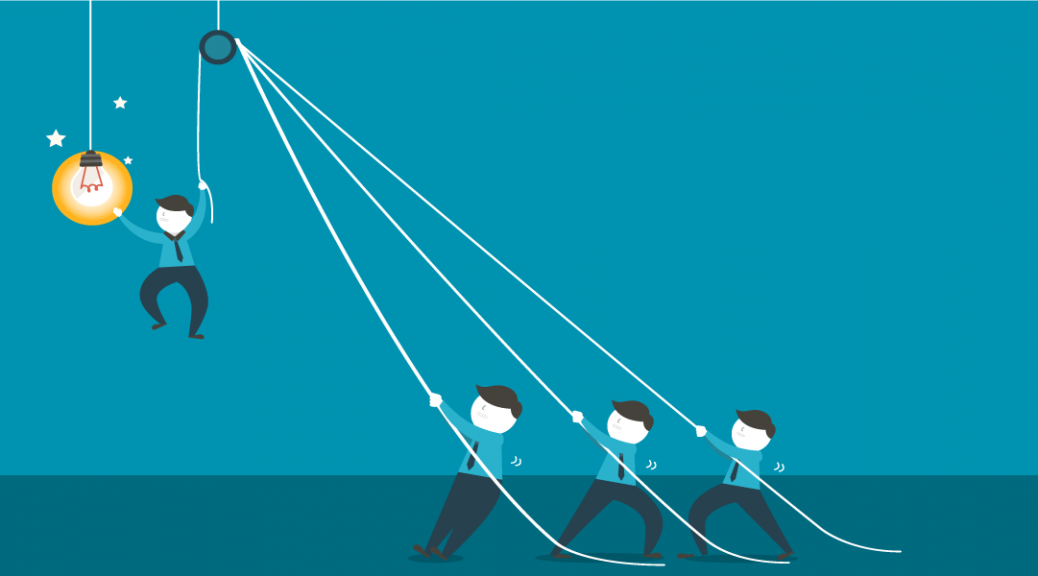In today’s dynamic world of constant change, it’s imperative that managers and leaders have the tools and skills necessary to help their employees change behaviour as needed.
In fact, change management is a critical skill for all managers and leaders in the 21st Century. The question then becomes, “How does a manager/leader change or influence an employee’s behaviour?”
The best tool for accomplishing this is feedback. It has been said that feedback is the “breakfast of champions.” This is absolutely true. With feedback, you can have a significant impact on an employee’s behaviour and results. Feedback is an act of recognition of a person, an event, a result, etc.
There are two main sources of feedback: a person can provide feedback to themselves, or they can receive it from others. There are three very different feedback scenarios:
- Positive Feedback – Positive feedback reinforces positive behaviour.
- Negative Feedback – Negative feedback stops negative behaviour.
- No Feedback – People who are unsuccessful in getting any feedback through normal behaviour will resort to making mistakes and/or causing trouble to get negative feedback. This is because getting negative feedback is better than having no feedback at all. Nature abhors a vacuum. The absence of feedback creates a psychological vacuum in a person’s mind. Under this condition, people will act in any way they can to gain feedback, either negative or positive.
Since it is often easier to get attention by doing something bad than it is by doing something good, in the absence of feedback, people will move from doing what they are doing now to doing something differently where feedback is achieved. We can easily see this in children. They will do whatever they need to do to get the attention of a parent, sibling, etc.
What Type of Feedback is Most Effective?
Actually, both positive feedback and negative feedback are effective if used in the appropriate manner at the right time.
As mentioned, negative feedback stops negative behaviour. As an example, an electrified fence will keep a stallion in a paddock, but does nothing to help him know what to do while he’s there. Similarly, negative feedback can be used to keep an employee from repeating negative behaviour, but does not necessarily contribute to the substitution of a positive behaviour to replace it.
Positive feedback, on the other hand, reinforces desirable behaviour. Immediate and positive recognition for positive performance will motivate an employee to want to repeat the behaviour. You can create a cycle of productive behaviour by recognising positive behaviour, which leads to more positive behaviour, followed by more feedback, and on and on.
How Do You Use Positive Feedback?
There are certain principles in giving positive feedback. Follow these principles and your positive feedback will have the greatest impact.
- Be sure your positive feedback is unconditional. Don’t give recognition and then take it away as in “That’s a terrific sales record this week, Mary, but can you do it again next week?”
- Multiply the feedback. Encourage the employee to talk about an accomplishment where other people can hear about it. “Barbara, you have done an absolutely phenomenal job of selling this week. Tell us how you did it, and how closing those sales made you feel.” If there is no one else around to hear about the employee’s experiences, be the best audience you can be and encourage the employee to tell you about it.
- Substantiate the feedback by giving tangible evidence. This could be in the presentation of a certificate, a plaque, or a trophy; having someone take a picture of the presentation and give it as a remembrance of the victorious event. You can also do this simply by writing a note to the employee congratulating them on their performance. Anyway that you can put something in writing where it is tangible adds to the value of the recognition and the feedback.
- When giving positive feedback, be very clear and specific. Tell the employee exactly what it is that you like. Next, tell the employee why you like it. Finally, ask the employee a question about the accomplishment such as, “What did you do differently that made the difference.” This gives the employee a chance to explain why they achieved the results and to actually relive the experience. Being clear and specific also helps the employee understand what behaviour it is that you are recognising. If you are not specific, the employee may interpret a different behaviour as the one that you are desiring.
- Make your feedback genuine. It is vital that any feedback you give is sincere and genuine. Do not make up feedback just to provide feedback. People can easily tell when you are not being genuine in your praise. This not only has no positive effect, it may actually have a negative effect on the employee.
In today’s dynamic world, having your people motivated, empowered and productive is crucial to the success of your group or organisation. Having the tools necessary to help your employees behave in the most productive manner will be a key to your success as a manager and a leader. Use these principles to help lead your people and your organisation to the pinnacle of success.
For a more in depth discussion on the skills and tools of change management, contact your LMA representative today, or give us a call on (Aust) 1800 333 270, or (NZ) 0800 333 270.
Source: LMA and Randy Slechta, President of Leadership Management International, Inc.







